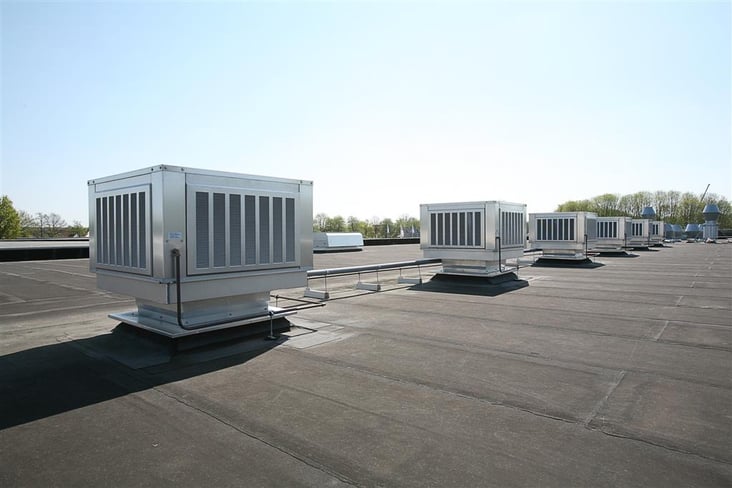This post is one in a series featuring the complete slate of advanced energy technologies outlined in the report This Is Advanced Energy. 
Image courtesy of Colt.
Heating, ventilation, and air conditioning (HVAC) systems consist of air conditioners, heat pumps, boilers, furnaces, and chillers, as well as the associated controls, air handlers, ductwork, and piping. Heating and cooling represent the largest source of energy consumption in the residential and commercial sectors, accounting for roughly 50% of energy consumed by a typical U.S. home and 40% in commercial buildings. Chillers alone can account for 35% to 50% of a commercial building’s energy use. Improvements in efficiency derive from various technological innovations, such as variable speed drives (which reduce energy use by electric motors) and increased heat exchanger surface area (which improves overall energy transfer to the conditioned space). Advanced HVAC systems also have sensors and controls that communicate with sophisticated energy management systems to further reduce energy use, improve comfort, and cut maintenance costs. Residential customers can also reduce home energy use through equipment upgrades and by using programmable thermostats such as a Nest Learning Thermostat, which can reduce heating and cooling costs by more than 20%.
Because HVAC systems are major capital investments, upgrades typically coincide with normal replacement cycles (20 to 40 years). However, accelerated replacement can capture early savings, and efficient HVAC systems are a large and growing market: $13.1 billion in the United States in 2014, an increase of 7% over 2013. Efficient HVAC systems can result in major energy savings, and are in wide use today in the commercial, industrial, and residential sectors. Emory University in Georgia installed two high-efficiency chillers in a medical facility, which lowered energy use for space cooling by nearly 50%. The project also included installation of variable-speed drives that reduced electricity use by the building’s HVAC pumping systems by 40%. Similarly, an evaporative cooling system delivered by CLEAResult reduced data center cooling energy use at Recreation Equipment, Inc. (REI), in Washington by 93%.
These energy savings translate to significant cost savings that can add up quickly — REI achieved a one-year return on its investment. Similarly, efficient HVAC systems installed by Johnson Controls resulted in $1 million in energy savings in less than a decade for the Marine Military Academy in Harlingen, Texas, and $50,000 in annual savings to the Waldo County General Hospital in Belfast, Maine. Because HVAC represents a significant portion of building energy use it is also a good candidate for energy management. A number of utilities offer direct load control programs or demand response programs, in which customers shed load from an HVAC system by precooling the building or by raising the set point a few degrees when called upon. Such programs improve overall grid performance and reduce the need for expensive peaking power plants, saving money for all customers. When integrated with intelligent controls, HVAC systems enable customers to take advantage of real-time pricing, resulting in cost savings while also providing benefits to the utility system as whole.
Learn more about energy efficiency and all the other advanced energy technologies in our report, This Is Advanced Energy, available free at the link below.
